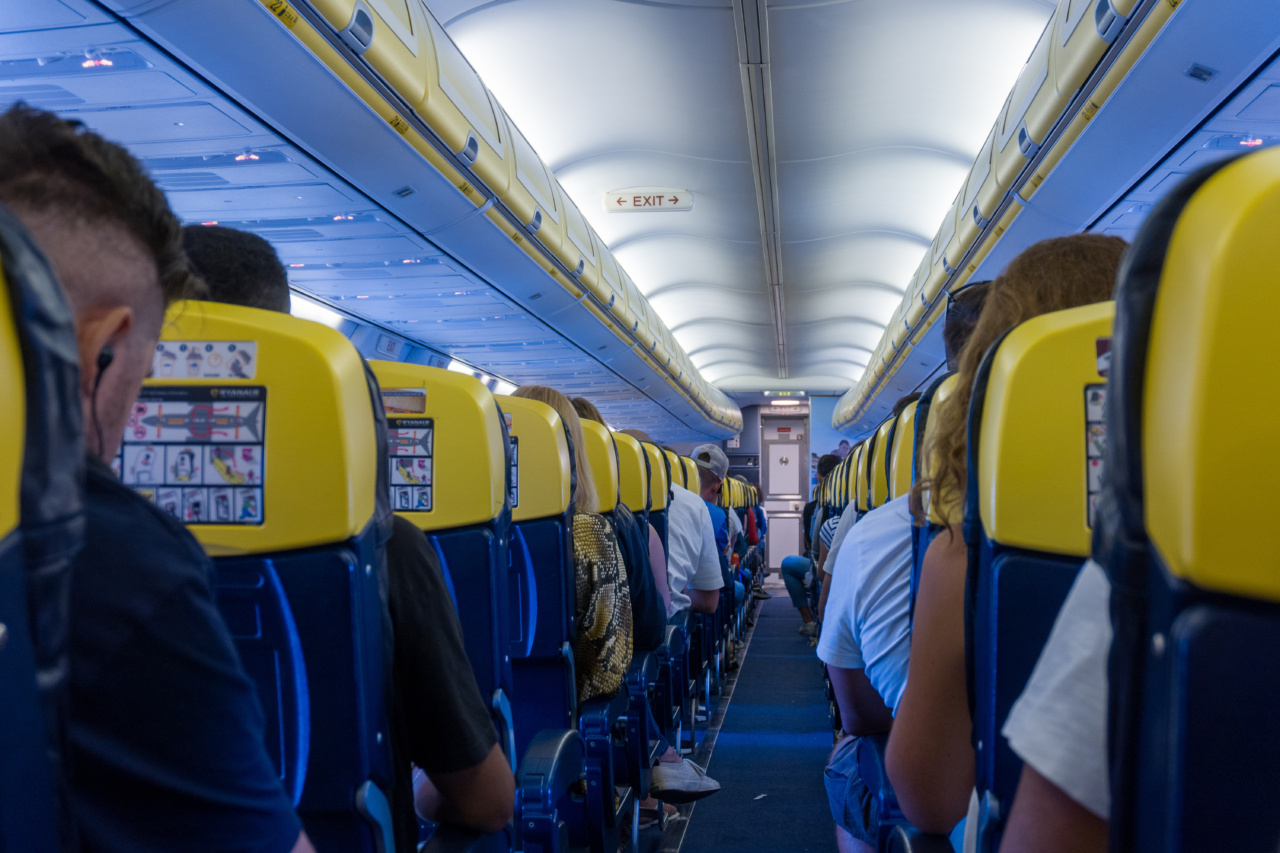In recent years, there has been growing concern about the potential health risks associated with long flights, particularly regarding blood clot formation.
Many studies have shown a link between prolonged sitting and the development of blood clots, also known as deep vein thrombosis (DVT). The confined space and immobility during air travel significantly increase the risk of developing these potentially life-threatening blood clots.
In this article, we will explore how airline seats contribute to blood clot formation and discuss preventive measures to stay safe during long flights.
1. Lack of Legroom
One of the primary factors contributing to blood clot formation during air travel is the limited legroom in airline seats.
Most airlines design their seating arrangements to accommodate a higher number of passengers, often resulting in cramped conditions. This lack of legroom restricts leg movement and decreases blood circulation in the lower limbs, which can lead to blood clots.
2. Prolonged Sitting
Long flights involve extended periods of sitting without many opportunities for movement. Sitting in the same position for prolonged durations can impair blood flow and increase the risk of developing blood clots.
Regular movement helps maintain healthy blood circulation, but the confined space of an airplane cabin makes it challenging to stretch and move around.
3. Immobility
Immobilization further aggravates the risk of blood clot formation during air travel. When we are immobile, such as during sleep or long periods of sitting, our blood circulation slows down.
The reduced blood flow, combined with the cramped seating conditions, can encourage the formation of blood clots in the deep veins of the legs.
4. Dehydration
Airplane cabins are typically dry environments, which can lead to dehydration during long flights. Dehydration thickens the blood, making it more prone to clotting.
Moreover, dehydration can cause discomfort and lead to decreased mobility, exacerbating the risks associated with blood clot formation.
5. Cabin Pressure and Oxygen Levels
The reduced cabin pressure and lower oxygen levels at high altitudes can also contribute to blood clot formation. The lower oxygen saturation in the blood may lead to an increase in blood viscosity, making it more likely to clot.
Additionally, the reduced cabin pressure affects the overall oxygen supply to tissues, potentially compromising circulation.
6. Compression of Blood Vessels
The design of airline seats, particularly those in economy class, can further compress blood vessels, impeding blood flow.
The tight seat belts, armrests, and narrow seats can restrict movement and put pressure on the legs, promoting blood clot formation. The lack of space to move or stretch exacerbates the compression of blood vessels.
7. Risk Factors
While everyone who flies long distances is potentially at risk of developing blood clots, certain factors can increase the likelihood. These risk factors include:.
- Previous history of blood clots or DVT
- Obesity or being overweight
- Use of contraceptive medication or hormone therapy
- Pregnancy
- Smoking
- Underlying medical conditions such as cancer or cardiovascular disease
- Genetic predisposition to blood clots
8. Preventive Measures
Despite the risks associated with long flights, there are several preventive measures passengers can take to reduce the likelihood of blood clot formation:.
- Stay hydrated during the flight by drinking plenty of water and avoiding excessive alcohol or caffeine intake. Hydration helps maintain proper blood flow and prevents blood thickening.
- Engage in in-seat exercises to keep the blood flowing. Ankle rotations, leg stretches, and calf exercises can help maintain leg movement and alleviate the risks associated with immobility.
- Wear compression stockings to improve blood circulation. These stockings apply pressure to the legs, helping prevent blood from pooling and reducing the risk of blood clot formation.
- Take regular walks or perform stretching exercises in the airplane cabin whenever possible. Airlines encourage this practice, and it is essential for promoting blood flow and preventing clot formation.
- Consider medications or supplements to reduce the risks of blood clot formation. However, it is vital to consult a healthcare professional before taking any medications or supplements.
9. Seeking Medical Advice
If you have a pre-existing medical condition or any concerns regarding blood clot formation during air travel, it is advisable to seek medical advice.
A healthcare professional can provide personalized recommendations based on your medical history and risk factors.
10. Conclusion
While air travel provides a convenient mode of transportation, it also poses certain risks, including blood clot formation.
The confined space, limited legroom, immobility, and other factors associated with airline seats contribute to the development of blood clots. However, by understanding the risk factors and implementing preventive measures, passengers can significantly reduce their chances of blood clot formation.
Remember to stay hydrated, keep moving, wear compression stockings, and seek medical advice if necessary. With proper precautions, you can ensure a safe and comfortable journey.





























